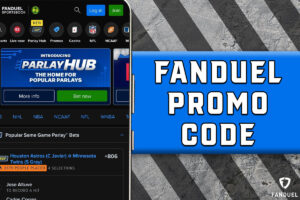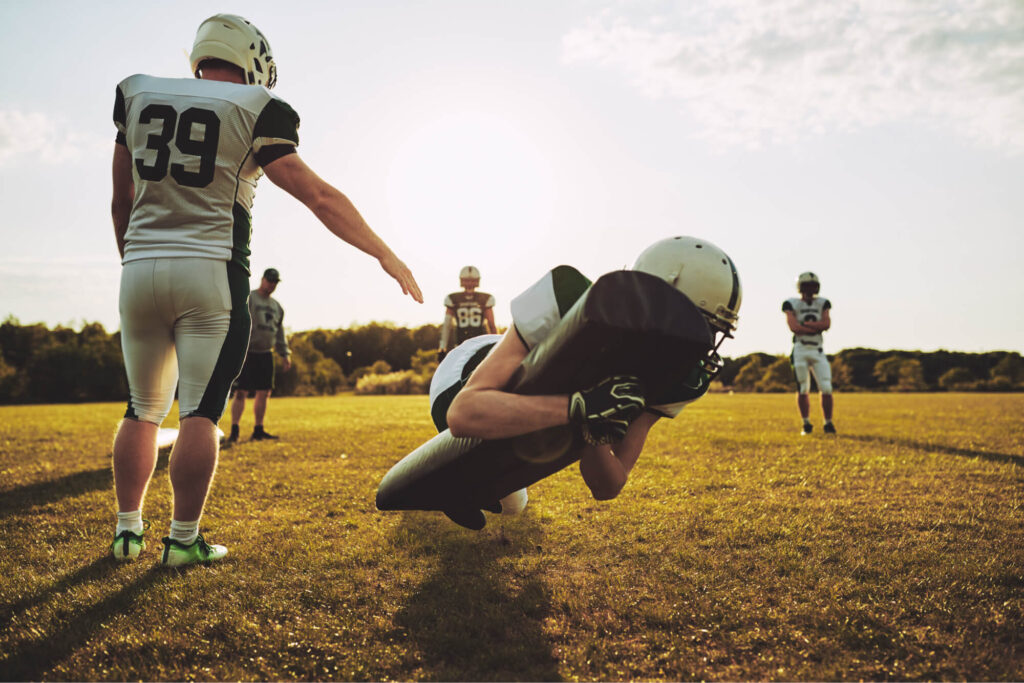The standard NFL play clock is 40 seconds. That is the total time that can elapse from the moment the whistle blows ending one play from scrimmage and the time by which the ball must be snapped to start the next play. (After some “administrative” stoppages, like timeouts, change of possession, measurements, etc., the play clock is set to 25 seconds).
During that forty second period, there is much business an NFL Quarterback must handle. A few of the considerations and/or questions for every Quarterback are listed below, followed by a mock example of the thought process and concerns for a Quarterback at different points during the play clock countdown.
Communication
From the moment the play clock is wound, every NFL Quarterback can receive one-way communication (Quarterback can listen only to instructions from his Offensive Coordinator, but cannot respond verbally) up until 15 seconds remain on the play clock. It is important for the QB to get and relay the play call information as quickly as possible to allow time for his unit to get to the line of scrimmage and for the QB, the O-Line, and the WRs to make determinations and calls, based on defensive alignment.
Offensive Personnel
Based on the play called by the OC, the QB must ensure the correct personnel are in his huddle.
Defensive Personnel
Awareness of the personnel on the field for the defensive team is critical. This allows the QB to go through his thought and sight identification process re: the defense.
Field Position
Down and distance, as well as the spot of the football, influence everything from the play originally called by the OC to the potential audibles called by the Quarterback. In a game clock management situation, the QB has the additional responsibility of calculating for use of the sideline after catches to force clock stoppage.
Time
Game Clock – Is there a need for managing the game clock (half or game ending, etc.)?
Timeouts – Are there any timeouts left, and does one need to be taken immediately following the next play?
Front & Coverage
Is the front being shown by the defense what was anticipated in the game plan?
Are there are any tendencies being shown, in terms of alignment or D-Line pre and post-snap movement, stunts, etc.?
Does the number or alignment of defenders in the “box” make the defense vulnerable to any run or pass play calls? (example: a DE with an extra wide alignment to help with pass rush may be easily kicked out on an off-tackle run)
Protection
Is the pass protection used so far providing enough time for set up and throw?
Is the RB’s help in pass protection being utilized properly? (example: is the RB aligned in, or motioned to, a place where he can complement O-Line protection rules?)
Man Checks & Audibles
When the defense shows straight man-to-man coverage with no deep Safety, there is certain to be a pressure package of some kind. The ability to either provide a solution to blitz action (a protection adjustment that works) or to throw the ball quickly and accurately is key.
Let’s take a quick look at a generic play clock scenario for an NFL Quarterback:
Between :40-:30 Seconds Left on Play Clock
Wrap previous play; Team back to huddle; Mental notes on previous play
The previous play has just ended, and the QB is conscious of the front and coverage he just saw, and how that fits into what he has seen thus far in the game. The QB must also be conscious at this point of the game clock – if it is a “clock management” situation (end of half approaching, his team playing from behind with limited game time left, etc.).
Between :30-:15 Seconds Left on Play Clock
Offensive personnel check; Play received and called; LOS approach
As communication from the OC begins, the Quarterback must double-check that the correct personnel are in his huddle. QB hears the play called and repeated, and relays the formation and call to his huddle. As the offensive unit breaks the huddle and approaches the LOS (line of scrimmage), the QB gets a look at the defensive personnel on the field (easiest identifier or queue for the QB is the number of defensive linemen and/or defensive backs on the field at this point). Throughout this approach, the QB is conscious of down and distance.
Between :15-:00 Seconds Left on Play Clock
Offensive personnel check; Play received and called; LOS approach; Audibles (if needed)
As the QB arrives at the LOS or shotgun setup, he quickly determines the defensive front, number of box (Tackle-to-Tight End) defenders, and the coverage. This is the point at which the QB decides if the play called should be run or if an audible should be called. For example:
· If Inside Zone has been called, but the QB recognizes an A-Gap blitzer, as well as tightened alignment from the DE, AND a LB cheated toward the edge of the formation to the opposite side of that A-Gap, he may want to change his play call (and backfield alignment) to get away from the defensive strength.
· Similarly in a pass play, if a deep route combination is called to the side of an extra edge blitzer in a six-man protection scheme in which the RB is aligned to the opposite side of the blitzer, the QB may want to move the RB to his opposite side, slide O-Line protection toward the blitzer, or call a shallow hot route to throw to the blitzer’s vacated area.
Although this is a simplified 40-second scenario, one that may be modified or expanded upon per a game plan, the basic elements of what is important to the Quarterback remain the same. These steps and progressions are executed by NFL Quarterbacks on every play of every game.
That’s their job.
And not an easy one by any stretch.







